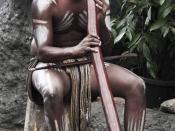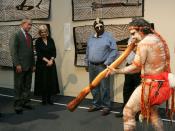Australian Aboriginal culture is complex and extraordinarily diverse. It is one of the world's longest surviving cultures.
There were over 500 different clan groups or 'nations' around the continent, many with distinctive cultures and beliefs. Hundreds of languages and dialects existed (although many are now extinct), as well as a variety of different customs and rituals, art forms, styles of painting, forms of food, and hunting habits.
Land is fundamental to the well-being of Aboriginal people. The relationship between a clan and its territory involves certain rights, such as the right to use the land and its products. With these rights comes a duty to tend the land through the performance of ceremonies. Individuals within the clan also have special relationships with places in their territory. In a nutshell, the land and identity are inseparable.
Indigenous people have occupied Australia for at least 60 000 years and have evolved with the land - changing it and changing with it.
The land was not just soil or rocks or minerals, but a whole environment that sustains and is sustained by people and culture. For Aboriginal people the land is the core of all spirituality and this relationship has been deeply misunderstood over the past 200 years or so. This relationship is central to all issues that are important to people today. When European colonisers first arrived in Australia they encountered an unfamiliar land occupied by people they didn't understand. Because they didn't understand the peoples' society and their land 'ownership' system, Australia was claimed by the British. But Aboriginal people fought, and are still fighting, for their land and their lives. The history of these battles is not often told but they involved hundreds of incidents and thousands of people. These stories form a part of the untold history of Australia.


